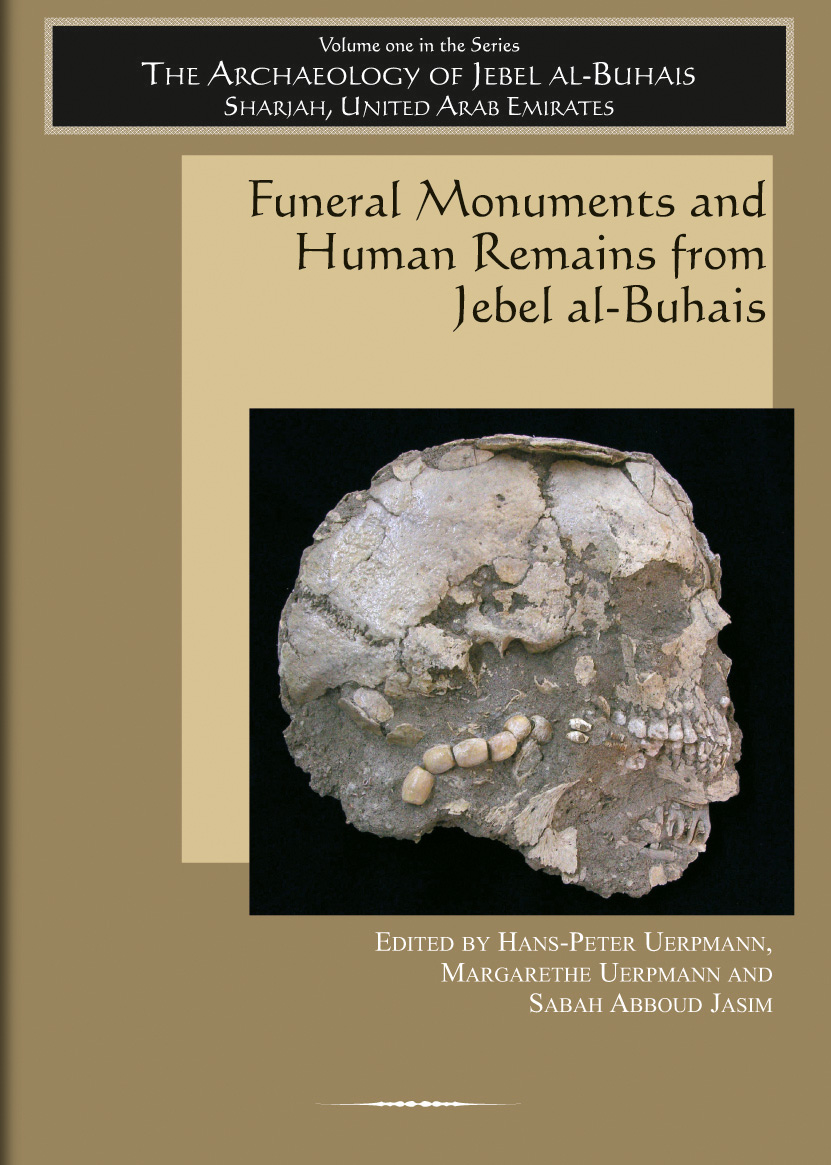Description
This is volume 1 of a 3 part series:
Part 1. The Archaeological Sites of Jebel al-Buhais – by Sabah Abboud Jasim
Part 2. Post-Neolithic Human Remains from the Jebel al-Buhais Area – by Adelina Uerpmann, Johannes Schmitt, Nicole Nicklisch and Michaela Binder
Part 3. Analyses of the Human Remains from the Neolithic Cemetery at al-Buhais 18 (Excavations 1996-2000) – by Henrike Kiesewetter
From the preface:
The present volume, which is the first in a series dedicated to the archaeology of the Jebel al-Buhais area, is intended to present an overview of the explorations carried out by the Sharjah Directorate of Antiquities and to describe the human remains from the numerous grave structures found in this area…
…The discovery of the Neolithic graveyard of al-Buhais was a particular event in the history of archaeology in southeastern Arabia. It opened up a new window onto the early inhabitants in a part of the world where insight into the lives of prehistoric populations is usually restricted to the meagre interpretations deducible from flints and other stones, which are the only materials durable enough to withstand the destructive influences of the harsh desert environment. The human remains, buried by their kin some 6000 to 7000 years ago, often with their personal adornments, and in a sediment containing the traces of their livelihood, convey a wealth of information that helps lead us toward a better understanding of early human mastery over a difficult environment. It is our task as excavators of the site to translate this information to those who could not experience the excitement of discovering the buried remains in the ground and of directly receiving the messages which they carried with them.
– Hans-Peter Uerpmann, Margarethe Uerpmann, Sabah Abboud Jasim, editors
Reviews
I found the whole volume to be informative, well laid out, with beautifully presented graphs and illustrations, particularly the photographs which helped to capture the essentials of excavation, analysis and interpretation. The volume clearly demonstrates the almost continuous use of this Jebel as a necropolis over thousands of years, and provides valuable insights into the prehistory of this relatively understudied area of the UAE. It should also have a broader impact, helping to refine interpretations of human prehistory in the region.
– Jennifer L. Thompson, International Journal of Osteoarchaeology (2007) see full review as PDF
This important work presents a model for future physical anthropologists that have the opportunity to carry out bioarchaeological research in th U.A.E. … the authors do a great deal to further our understanding of both issues of biological adaptation as well as diet, health, behaviour and belief systems as revealed through the monuments built to house the dead and analysis of the bones within.
– D.L. Martin, Arabian Archaeology and Epigraphy (2007)
The discovery of the Neolithic graveyard of Al-Buhais 18 was a major event in the history of archaeological research in southeastern Arabia. It provided for the first time a window onto the early inhabitants of this region. The human remains buried some 6000 to 7000 years ago were often adorned with a fascinating range of personal adornments. This monograph represents the results of ten field seasons which took place between 1996 and 2005. Both the Directorate of Antiquities of the Department of Culture and Information of the government of Sharjah, as well as the Institute of Pre- and Protohistory and Medieval Archaeology of the University of Tübingen, should be congratulated for the production of this handsome volume. It sets new standards for archaeological publication in the United Arab Emirates….This detailed study provides valuable new information about the Neolithic herders, fishers and foragers of the region, as well as the Bronze and Iron Age agriculturalists and craftsmen.
– Mark Beech, Tribulus (2006)
